Are you tired of dealing with a stubborn bathtub faucet that just won’t turn off? Don’t worry, we’ve got you covered! In this article, we will dive into the reasons behind why your faucet is acting up and provide you with step-by-step instructions on how to fix it. From worn-out valves to faulty handles, we’ll explore all the possible culprits causing this frustrating issue. So sit back, relax, and let us guide you through the process of getting your bathtub faucet back in working order.
Bathtub Faucet Won’t Turn Off Causes
If your bathtub faucet won’t turn off, there could be several reasons behind it. Let’s explore a few causes
Leaky cartridge
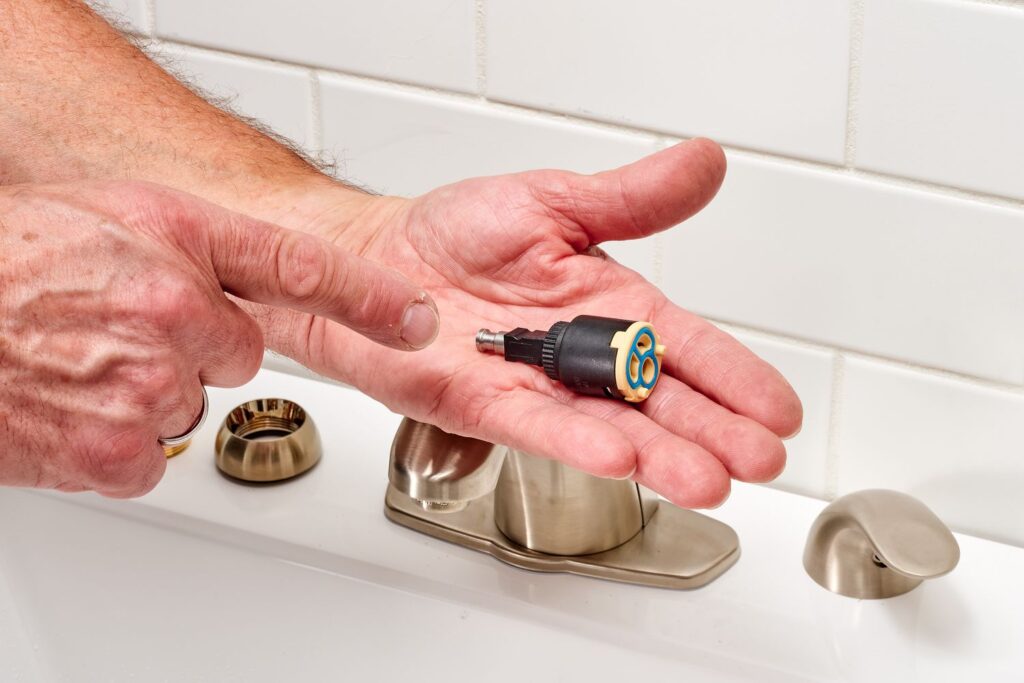
To fix a leaky cartridge in your bathtub faucet, you can try replacing the cartridge yourself or contact a professional plumber for assistance. Cartridge maintenance is important to prevent leaks. Common cartridge problems include dripping faucets and difficulty turning the handle. Troubleshooting tips include checking for mineral buildup and ensuring proper installation. Signs of a faulty cartridge include water leaking from the handle or spout. DIY cartridge repair can be done with basic tools and replacement parts.
Stripped valve stem

When dealing with a stripped valve stem, it’s important to seek professional assistance from a plumber. A stripped valve stem can prevent your bathtub faucet from turning off properly, leading to water wastage and potential damage. To fix this issue, the valve stem will need to be replaced. It is recommended to contact a professional plumber for this task as they have the knowledge and tools required for a successful valve stem replacement. Taking DIY measures without proper expertise may result in further damage or safety hazards.
Damaged Faucet handle
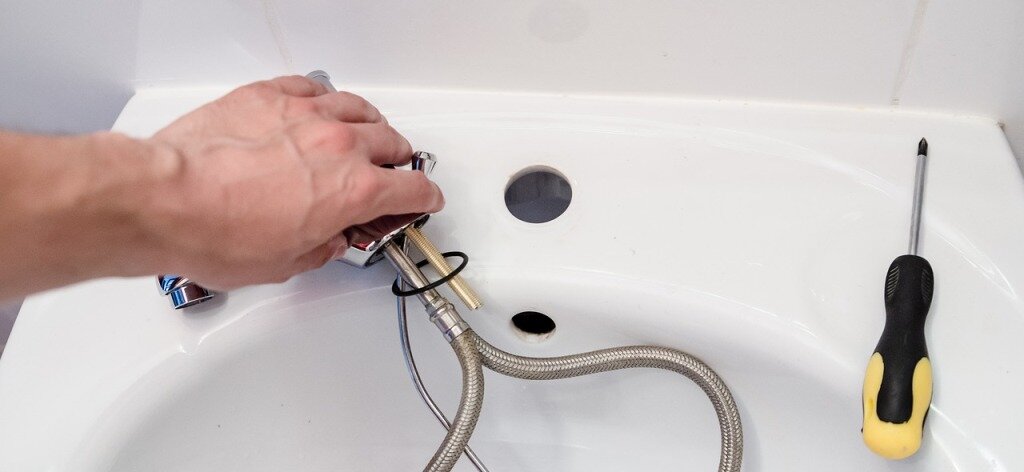
Here are some tips to help you with this repair:
Damaged Handle Repair:
- Identify the type of handle you have (knob, lever, or cross).
- Purchase a replacement handle that matches your existing one.
- Follow the manufacturer’s instructions to remove the old handle and install the new one.
Temporary Sealing Methods:
- Use thread seal tape to temporarily seal any leaks around the handle.
- Apply plumber’s putty around the base of the handle for added sealing.
- Draining Techniques:
- Before repairing or replacing the handle, turn off the water supply to prevent any accidents.
- Open the tub drain to release any remaining water in the bathtub.
Corroded internal parts
The corroded internal parts of a bathtub faucet can cause it to malfunction and require professional repair. Corroded parts, such as valves and stems, can lead to leaks and difficulty in turning off the water flow. To fix this issue, a plumber may use faucet repair techniques like cleaning the aerator or replacing the corroded parts. Regular maintenance tips include cleaning the aerator regularly and seeking plumbing services for any signs of corrosion or leakage.
Faulty diverter valve
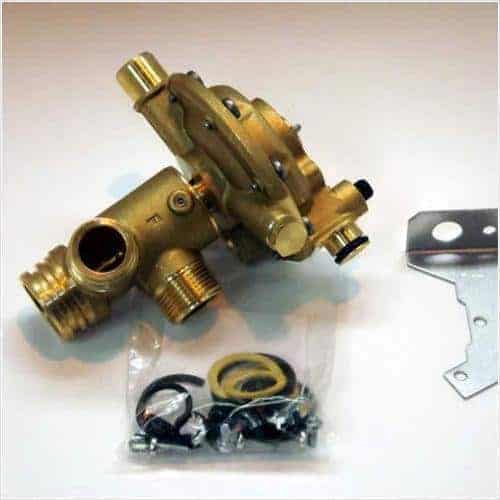
If the water keeps flowing from your bathtub faucet even when you’ve turned it off, a faulty diverter valve could be to blame. Here are some troubleshooting techniques and DIY faucet fixes you can try before seeking professional plumbing advice:
- Start by turning off the main water supply to prevent further water flow.
- Disassemble the faucet handle and inspect the diverter valve for any signs of damage or wear.
- Replace the faulty diverter valve with a new one, making sure to follow proper installation steps.
Remember to always prioritize safety and consult a professional if needed.
Immediate Solutions to Fix the Faucet
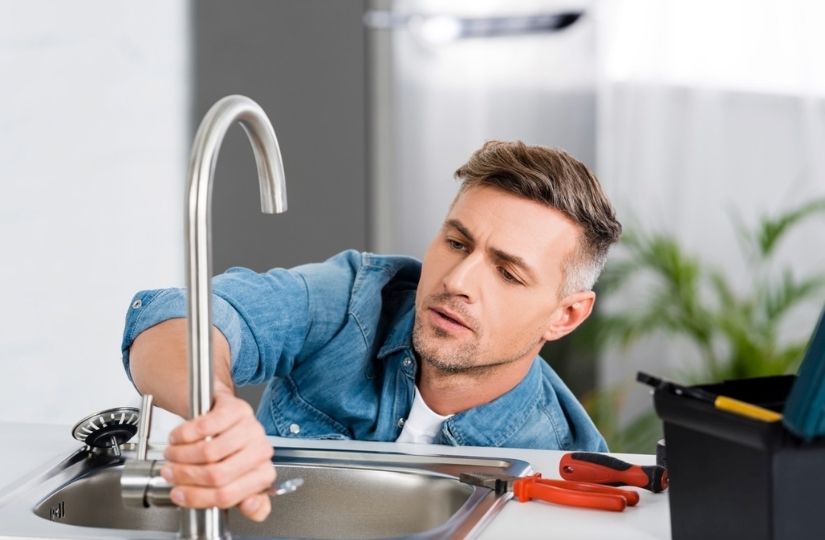
If your bathtub faucet won’t turn off, there are several immediate solutions you can try. First, locate the main water supply valve and turn it off to prevent any further water flow. If the faucet handle is still stuck in the “on” position, you can use pliers to manually turn it off. To temporarily seal the faucet and prevent any water leakage, consider using a cloth or towel to cover the spout. Lastly, don’t forget to drain the bathtub by opening the tub drain to release any excess water.
Turn off water supply
Knowing the location of the main water shut-off valve is crucial in such situations. To turn off the water supply, follow these steps:
- Locate the main shut-off valve, usually found on an interior wall near the front of the house.
- Turn the valve clockwise to shut off the water flow.
- If you can’t find the main shut-off valve, check near your hot water heater or in the yard.
Use pliers for manual turn off
To manually turn off the water supply, grab a pair of pliers and firmly grip the valve handle, then rotate it clockwise to shut off the water flow. Using pliers is an effective way to ensure a secure grip on the handle for better control. This method allows you to quickly and safely stop the water from flowing in your bathtub faucet. Remember to also drain the bathtub and consider temporary faucet sealing until repairs can be made using proper faucet repair tools.
Temporarily seal the faucet
When the bathtub faucet won’t shut off, you can temporarily seal it by wrapping thread seal tape around the valve stem tip. This technique can help prevent water wastage and potential damage to your home. However, it is important to note that this is a temporary solution and professional assistance may be required for a long-term fix. Remember to always prioritize safety and consider water conservation in DIY repairs.
Draining the bathtub
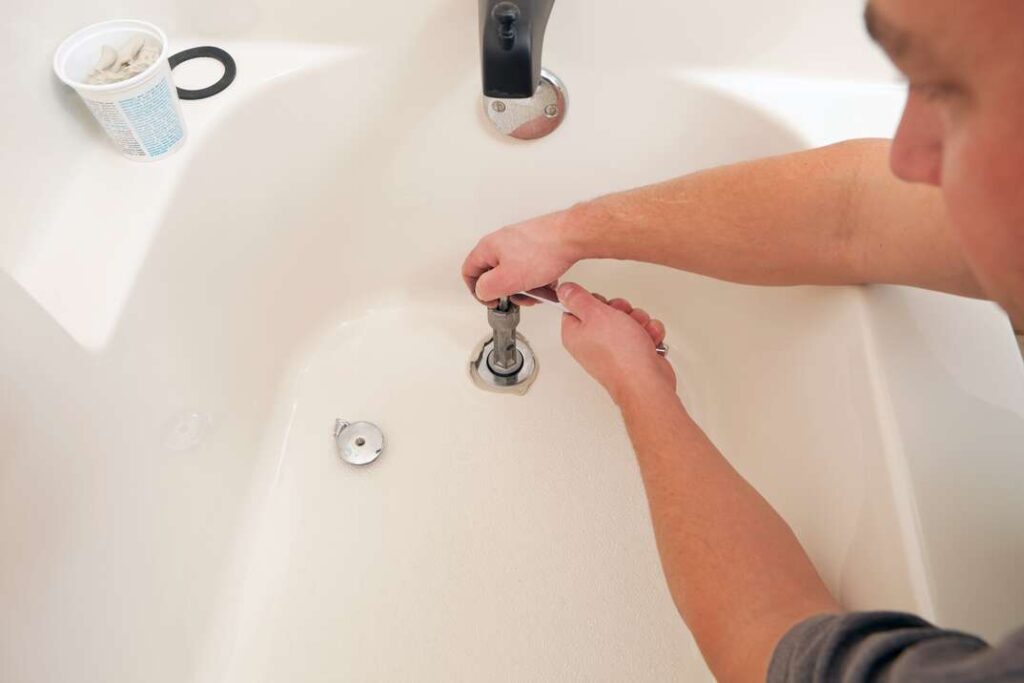
Now that you’ve temporarily sealed the faucet, it’s important to prevent any potential bathtub overflow by draining the water. This step will help release excess water and avoid further damage. Simply open the tub drain to allow the water to flow out. Remember, staying calm and knowing the location of your main shutoff valve is crucial in case of emergencies. By taking these precautions, you can ensure safety and prevent any potential flooding in your bathroom.
Faucet Repair Techniques
If you’re experiencing a bathtub faucet that won’t turn off, there are several key repair techniques to consider. These include cartridge replacement, o-ring replacement, valve stem repair, handle repair, and internal cleaning. Knowing how to perform these repairs can save you time and money by avoiding the need for professional assistance.
Cartridge replacement
To fix your bathtub faucet that won’t turn off, you’ll need to replace the cartridge. Here are some troubleshooting tips and DIY faucet repair advice for common faucet problems:
- Identify the type and size of the cartridge needed for replacement.
- Turn off the water supply to the faucet before starting any repairs.
- Remove the handle and trim to access the cartridge.
- Use pliers or a cartridge puller tool to remove the old cartridge.
- Insert the new cartridge, making sure it is properly aligned.
- Reassemble the handle and trim, ensuring everything is securely tightened.
O-ring replacement
Replacing the O-ring can help resolve issues with a bathtub faucet that is not shutting off. The O-ring is a small rubber ring located inside the faucet handle. Over time, it can become worn or damaged, causing leaks and preventing the faucet from fully closing. To replace the O-ring, first, turn off the water supply to the faucet. Then, carefully remove the handle and locate the O-ring. Replace it with a new one of the same size and reassemble the handle. If you are unsure about performing this repair yourself or need assistance with other plumbing issues, it’s important to choose a reliable plumber who specializes in faucet repairs and maintenance to ensure safety and prevent further leaks.
Valve stem repair
If you’ve already replaced the O-ring and your bathtub faucet still won’t turn off, it’s time to troubleshoot the valve stem. Common problems with the valve stem can cause the faucet to remain open. Here are some troubleshooting tips:
- Signs of a faulty valve stem include dripping water or difficulty turning off the faucet.
- DIY valve stem repair may be possible if the stem is damaged or worn.
- However, replacing the valve stem is often recommended for a long-term solution.
Now let’s dive into more details about valve stem replacement and how you can fix it yourself.
Handle repair
When the handle on your bathtub faucet is damaged, it’s important to address the issue promptly to ensure proper functionality. Common bathtub handle problems include cracks, loose screws, and difficulty turning the faucet on or off. DIY handle repair tips include tightening screws, replacing O-rings, and lubricating the handle mechanism. Regular handle maintenance is crucial to prevent further damage. When considering handle repair vs replacement, pros of repair include cost-effectiveness, while cons may include limited durability compared to a new handle.
Internal cleaning
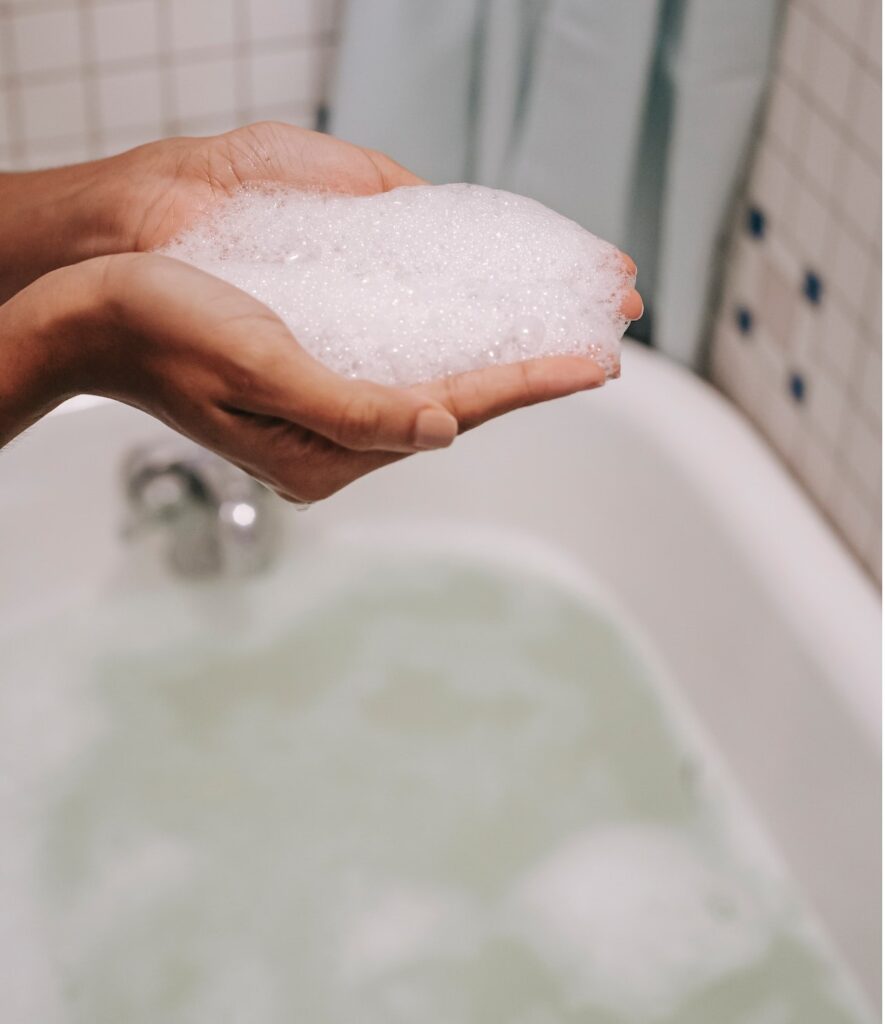
To ensure your bathtub faucet functions properly, it’s important to understand the process of internal cleaning. Regular maintenance helps prevent clogs, maintains water pressure, and ensures a clean aerator. Here are key steps for performing internal cleaning:
- Remove mineral deposits: Use a vinegar solution or a commercial descaler to dissolve mineral build-up inside the faucet.
- Clean the aerator: Remove the aerator and soak it in vinegar to remove any debris or sediment.
- Prevent future clogs: Install a mesh screen over the drain to catch hair and other debris.
Clean the Faucet’s Aerator
Start by locating the aerator on your bathtub faucet and cleaning it to ensure optimal water flow. The aerator is a small device that screws onto the end of the faucet and helps regulate the water flow. Over time, it can become clogged with mineral deposits and debris, causing reduced water pressure. To clean it, unscrew the aerator from the faucet using pliers or an adjustable wrench. Soak it in vinegar for a few hours to dissolve any buildup, then scrub it with a brush to remove any remaining residue. Rinse thoroughly before reattaching it to the faucet. Regularly cleaning the aerator is an important preventive measure to maintain proper water flow in your bathtub.
When to call a plumber For Faucet Repair
If you’re unsure about fixing the bathtub faucet or need plumbing services, it’s best to contact a professional plumber. They have the knowledge and expertise to handle any faucet repair issues safely and effectively. Here are some reasons why calling a plumber is essential:
- Common faucet repair mistakes can worsen the problem and cause further damage.
- Signs of a leaky faucet, such as dripping water or low water pressure, indicate the need for professional assistance.
- DIY faucet repair tips may not always resolve the underlying issue and could lead to more significant problems.
- Professional plumbers can provide advice on how to prevent bathtub faucet issues in the future.
- Regular faucet maintenance by a qualified plumber ensures optimal performance and helps identify potential problems early on.
Faucet Replacement: The Last Resort
Replacing the faucet should be considered as a last resort option. Before going down that route, it’s important to troubleshoot common faucet problems. This can include checking for worn-out valves or faulty handles that prevent the faucet from turning off. If DIY fixes don’t work, it may be time to consult a professional plumber for faucet replacement. When choosing a new faucet, make sure to consider factors like compatibility with your bathtub and ease of maintenance to prevent leaks and ensure cleanliness.
Maintenance Tips to maintain Bathtub Faucet
To maintain your bathtub faucet, regularly clean the handles and spout using a mild soap solution. This preventative maintenance helps prevent the buildup of dirt and grime that can lead to issues with your faucet. By identifying common issues such as worn-out valves or faulty handles, you can take appropriate action to ensure your faucet functions properly. Regular inspections are important for catching any problems early on. Additionally, DIY faucet maintenance tips include tightening loose screws and lubricating moving parts for smooth operation.
Conclusion
In conclusion, when faced with a bathtub faucet that won’t turn off, it is crucial to remain calm and take immediate action. By knowing the location of the main shutoff valve and contacting a professional plumber for assistance, you can prevent flooding and costly water damage. Remember, like a captain steering their ship through rough waters, you have the power to navigate through these plumbing challenges and keep your bathroom in shipshape condition. Take charge and ensure the smooth sailing of your home’s plumbing system!

